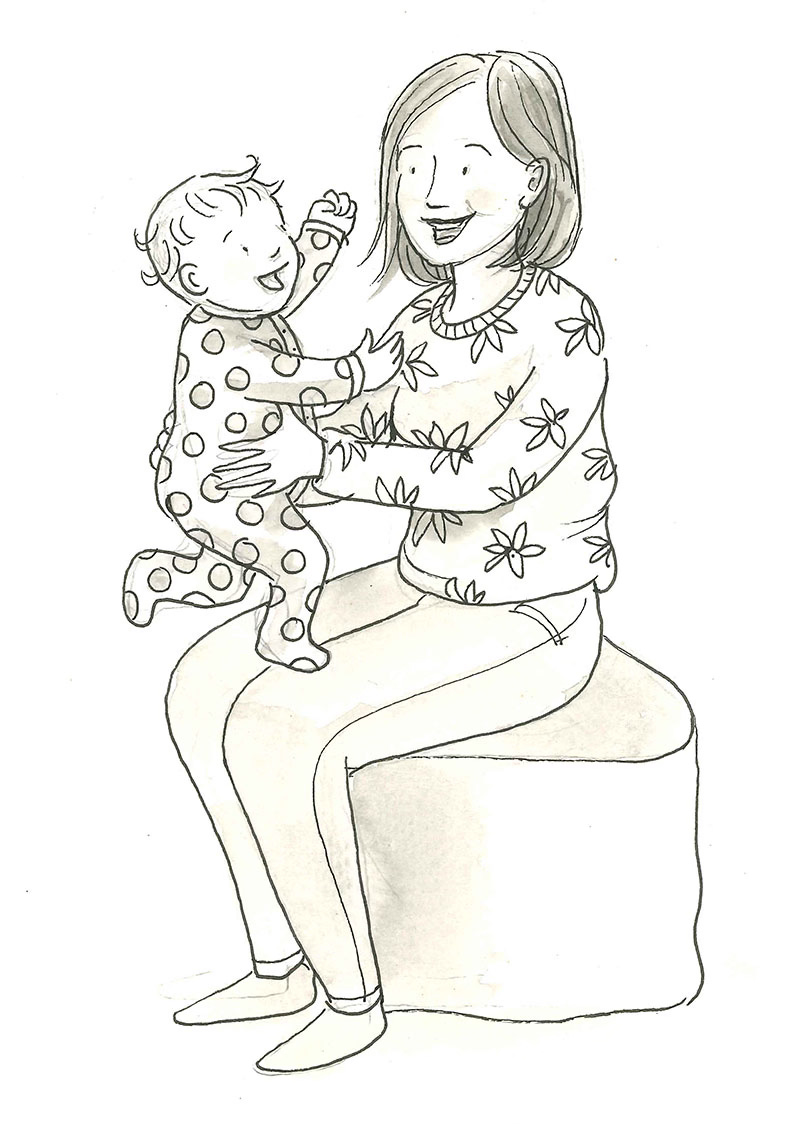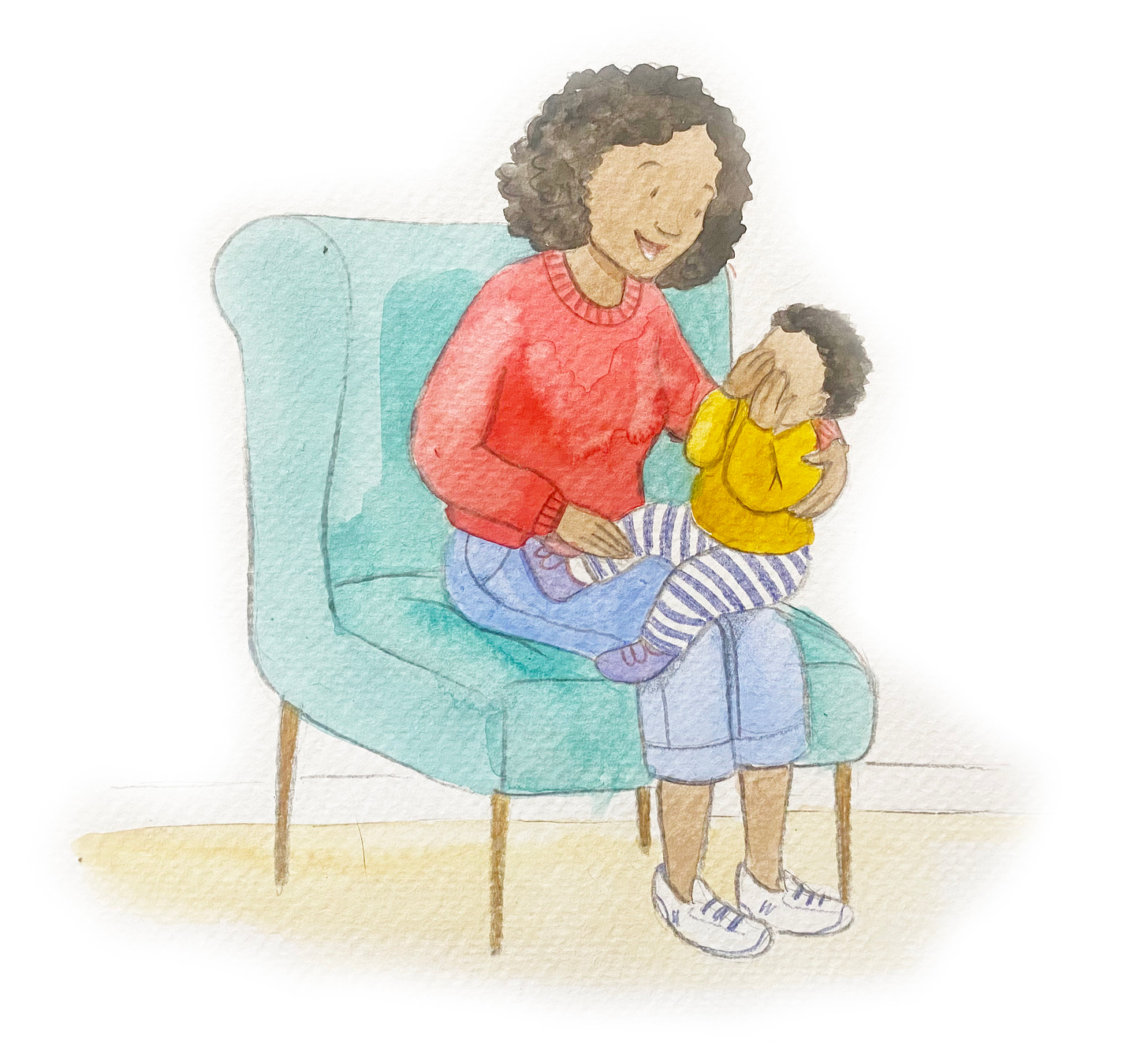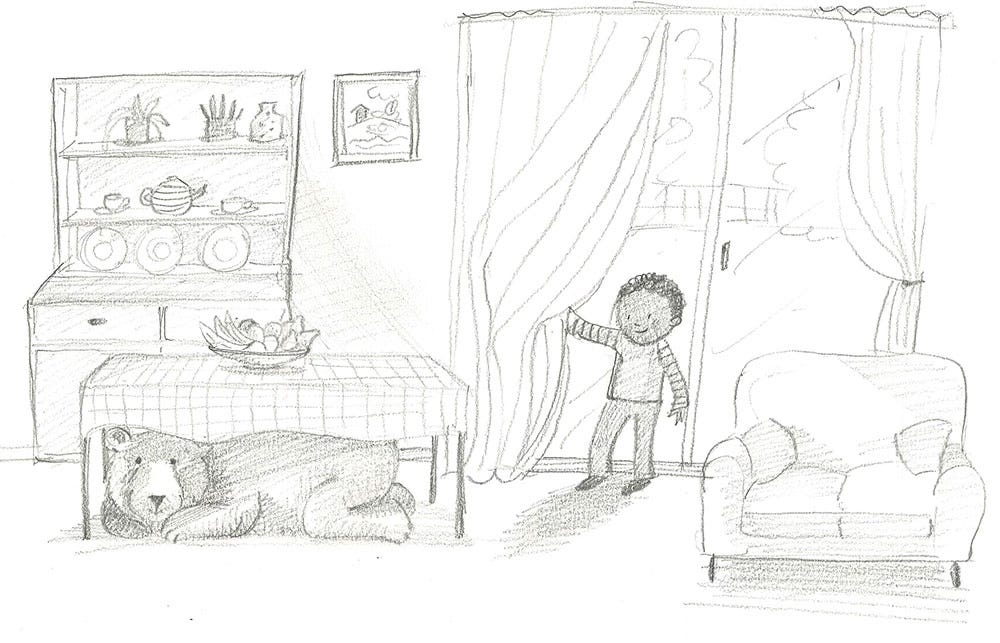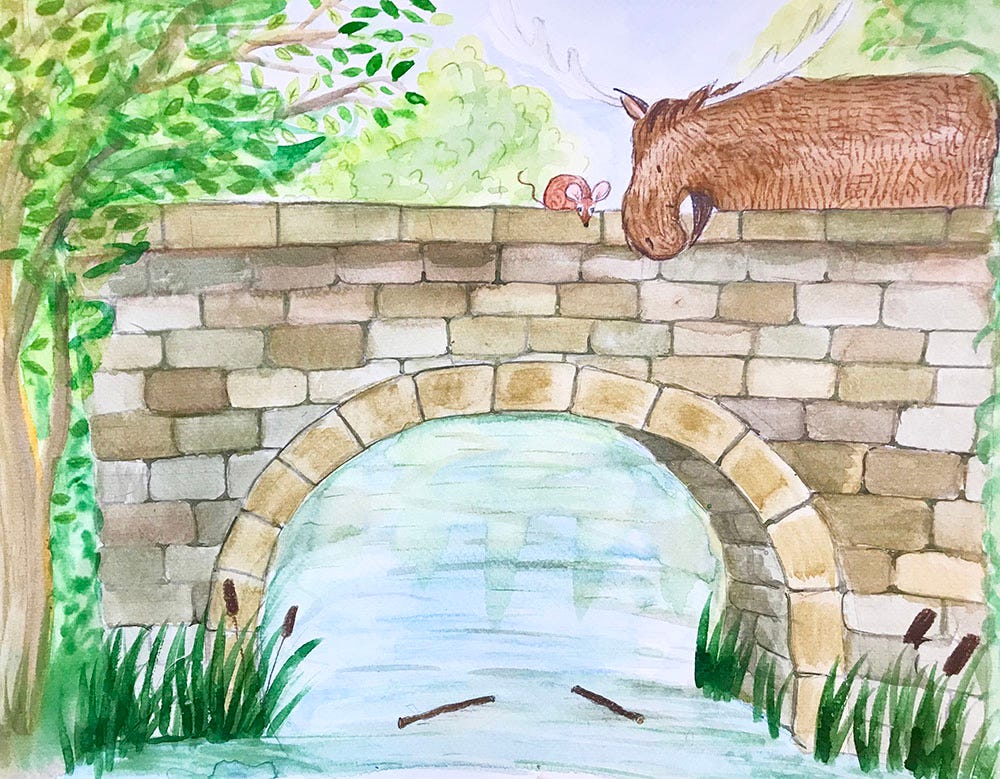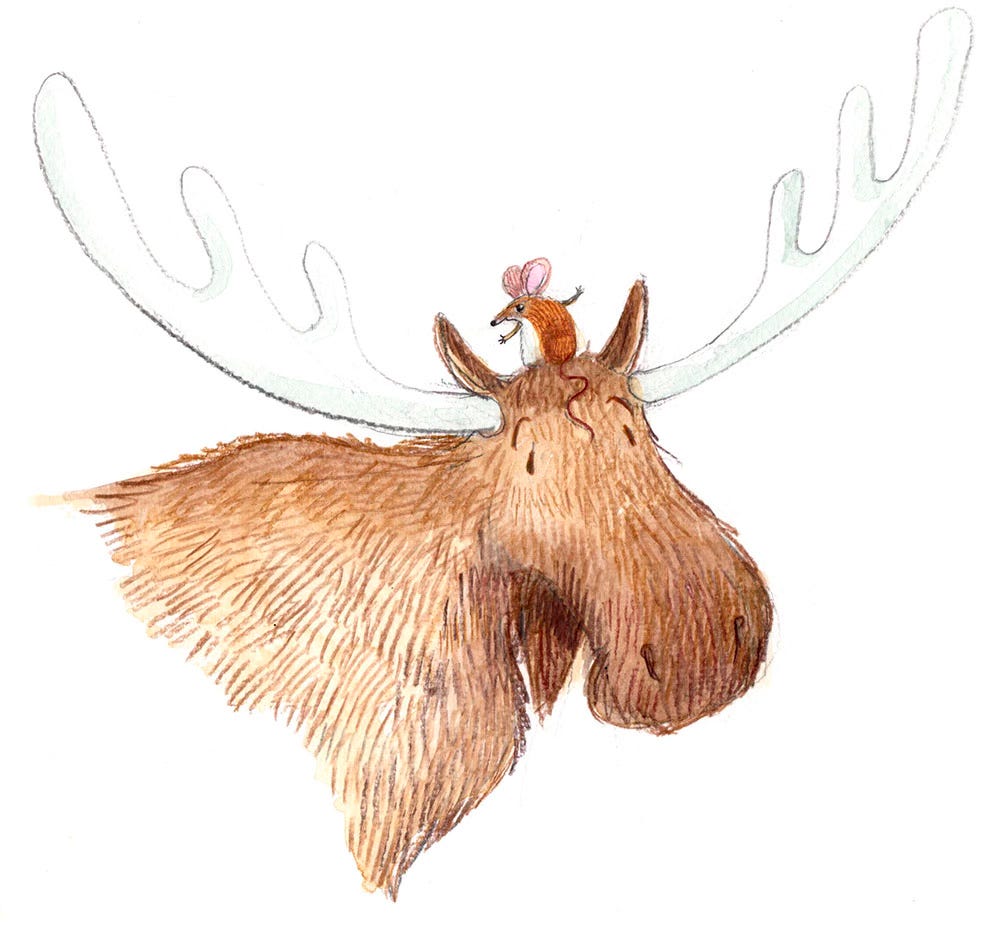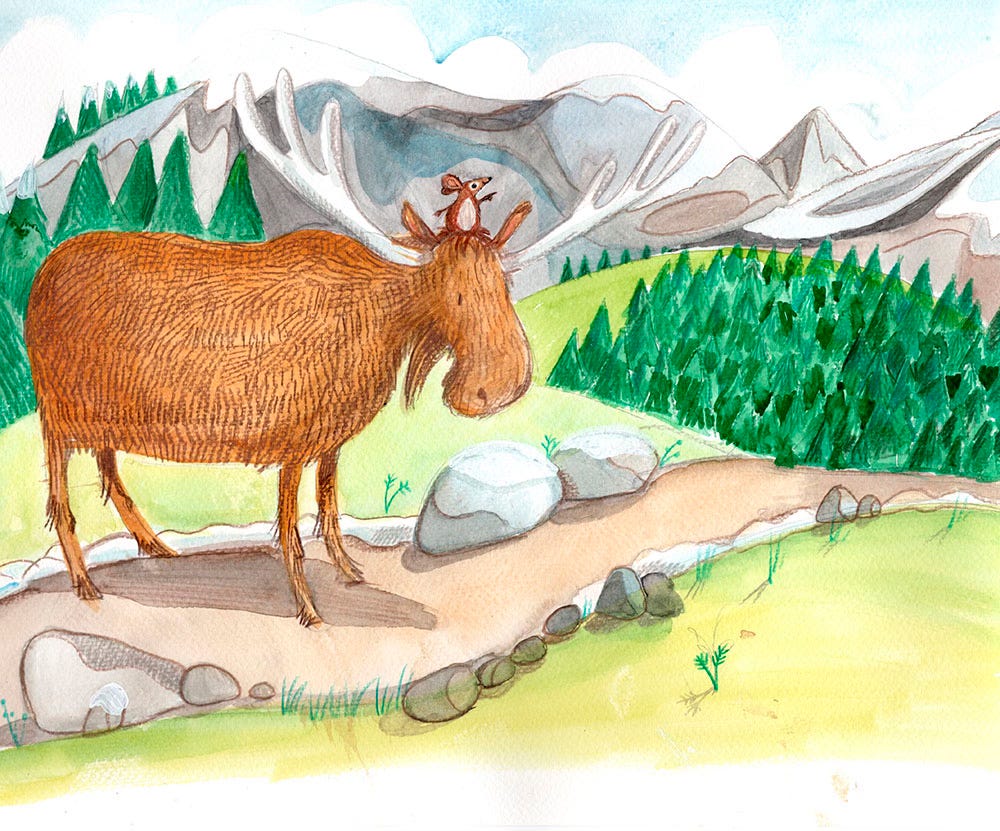Last weekend saw the end of another NDP Diploma course with students from UK, Ireland, South Africa, Romania, Portugal, Ghana, India, completing their 6 Modules. NDP has really grown in an extraordinary way, and across the world in so many countries. What started as a small online project as a result of Covid, is now firmly established both ‘live’ online, as well as a newly revised ‘Self-Guide’ course which you can study in your own time. Welcome to everyone whether an NDP groupie or interested participant!
Our features for our paid subscribers include new techniques, new stories, time to talk and share, free webinars, consultations and discussion time. This week it also includes the opportunity to download a special short story from our ‘Moose and Mouse’ series for use in therapeutic situations. Thank you hugely to those of you who are paid members - otherwise known as The Nest! - it makes a big difference.
With love,
Dr Sue
29 March 2024
Main Article:
‘No answering back!’ say teachers and parents
Dramatic Play is very important in Neuro-Dramatic-Play. In fact, it has been developing during pregnancy when mothers talk to their unborn baby, and answer themselves ‘as if’ they are the baby. From birth onwards, mother and baby are engaging in interactive play, exchanges of sounds, actions and slowly, words. This growing ‘interaction’ grows during the first two years with gradually developing conversations. Otherwise known as ‘dramatic play’ the child is beginning to understand, ‘let’s pretend’. And of course, it helps to establish Attachment as adult and child are learning how to play games together, and sharing special moments.
One special moment that occurs around 6 months old is when we hold the baby round the waist and he or she start to dance on our lap – the baby is dancing before walking, and there is delight from both people when this is achieved. The drama game of ‘Peek-a-boo’ (Peter Slade and I seem to be the only people that refer to this game as ‘Peep-Bo!), is also enjoyed around this time, when mother covers her face and then appears; eventually the baby learns to ‘appear and disappear’ so the game becomes reciprocal. It is important not to start this game too early, as some babies will feel the adult has really gone. Peek-a-boo is a forerunner of hide and seek, which I will discuss further.
By 10 months babies are able to imitate another person, they are behaving as if they are the other person; this crucial observation comes from the late Richard Courtney, (an important pioneer in Dramatherapy and Drama in Education) which he calls the Primal Act. His ‘Developmental Check List’ is reprinted in Introduction to Dramatherapy (1989, Jessica Kingsley/Hachette), and is an extremely helpful tool when assessing infants for creative work. This book also contains a questionnaire for recording one’s own dramatic history.
Unfortunately, this capacity to hold a two way conversation, to ‘interact’ becomes less welcome when a child starts school. Children are expected to respond when they are greeted by an adult or asked questions, or are given a gift. However original conversations or responses that are unexpected or failure to appreciate a gift become the means to put downs or criticism. ‘Don’t give me lip/cheek’ or ‘fingers on lips’ or ‘not another word’. There are many sayings or attitudes that can serve as put-downs at any age.
I can still remember vividly when I was 15 years old and attended a dinner where the educationalist, John Newsom, was a guest. He was sitting opposite me and I said to him how much I had enjoyed his new book. Instead of answering me graciously, he turned to nearby guests and said, ‘You see, my audience’ and they all laughed of course. I was mortified and blushed deep red, and thereon became nervous of expressing an opinion to adults, unless it was well rehearsed from my parents. It took me years to overcome that unease that I was probably wrong.
I said earlier how important the game of hide and seek is, whether in therapy or generally as a childhood activity. In the playground or park, usually the child enjoys outwitting the seeker and staying hidden. However, in therapy there seems to be an overwhelming desire to be found; so much so that the child will start to give clues if they are not discovered quickly. They will giggle, hiss directions, or make a deliberate loud sound, all to indicate their whereabouts.
One reason must be, that by finding the child, they feel that they matter enough to be found. This must be the case where children have been ignored, overlooked or rejected. However, I wonder whether we are thinking of an earlier stage of developing emotional intelligence. Many children coming to therapy have an emotional intelligence that is far lower that their IQ. Are we really looking at the equivalent of the 6 month old, who cannot yet tolerate the adult disappearing in Peek-a-boo? So being found in Hide and Seek will reduce the anxiety. It is also helpful if the therapist or teacher or mentor, keeps up a commentary while they are looking, such as, ‘Mary has chosen a very clever place to hide, but I shall find her; wouldn’t I get into trouble if I didn’t find her? She is wearing red trousers, and a special T shirt I noticed… Often giggling starts at this point! When you are found, you are seen, you are recognised, you exist! Jungian analyst Alice Miller talks about Ceaucescu, the Romanian dictator whose mother forgot she had given birth to him, and never recognised him, always asking if he was hers!
So we can see how playful dramas and games are essential for the developing child from birth onwards, and now important the capacity to hold conversations contributes to our confidence and communication
We shall explore more about dramatic play and drama and its significance in our development when we come to discuss ‘Embodiment-Projection-Role’. There will also be some downloadable worksheets for paying subscribers in the next section, which give various techniques for Water Play, Rhythmic Play, Messy Play and Dramatic Play – the basics of NDP!
Happy Egg Hunting, Easter, and other celebrations!
There will be also be a Jungle Special coming up soon as I am off to spend precious time with my friends, the Temiar, in Malaysia soon!
With love
Dr Sue
Bits and Pieces
We shall be announcing the NDP Supervisors course shortly. Three modules for people who are already qualified Supervisors, otherwise six modules.
Check out Flute Theatre Co. (director Kelly Hunter MBE), they are having an ‘International Festival for Autistic Individuals’ in London, 2024, with Shakespeare theatre productions. See HERE.
Thank you to Kavya Niman for sending in information about the Festival of Colour, Holi. Kavya suggests we should incorporate it as an NDP Festival, what do you think? Find out more here and here.
And finally, our bed-time story, a new Moose and Mouse story…
Moose and Mouse find some Eggs!
Moose and Mouse, who live in the pine woods of Norway, were taking a stroll that lead towards the river, that flowed into the Big Water. It was their favourite walk as it had so many possibilities: they could cross the bridge into the green meadow, or they could stay on the bridge and play Poohsticks, a new game that Moose had taught Mouse, which was great fun.
Today they decided to keep walking towards the Big Water and see if there was anything new. They got near the point where the river tumbles into the lake, that they call the Big Water. Mouse is always a little scared at this point as the river is moving very quickly and there is a small waterfall and a lot of noise. However she snuggles close in her special place between Moose’s antlers and feels more secure, although she is high up in the air.
‘Look,’ says Moose, as he goes to drink from the lake, ‘Eggs in a nest’. ‘I’m coming down to look more closely,’ said Mouse instantly. And she ran down Moose’s side and leg and went to inspect the nest. It had five eggs in it, but there was no sign of any mother bird. ‘If those eggs get cold,’ said Moose, ‘the birds won’t hatch out. Let’s wait for a few moments.’
They waited and no bird came in sight so Moose decided they had to do something. He reached for some leaves from the nearby trees and Mouse pulled the edges of the nest closer so it was more cosy. They covered the nest in leaves, hoping it would be like a blanket and keep the eggs warm enough. They decided to go back to their home and bring things that could help them take the nest home if the bird had not returned.
‘We need a flat piece of wood,’ said Moose , ‘and one of those ropes you are good at making out of ivy, then we can drag the nest home.’ Mouse was proud that they would use one of her ropes; she remembered when she had created a way to hold onto Moose’s antlers with the ivy, when they crossed the Big Water and she was very scared!
They retraced their steps to the Big Water, and to their delight they could see a large white duck sitting on the nest! Moose went closer and said, ‘We are so pleased that you are back, we were very worried about your eggs.’ The duck replied, ‘Yes, I went for a short swim to the other side of the water and my feathers became coated in oily mud and I could hardly move. It took ages to get clean again.’ Another large white duck swam alongside the nest and greeted Moose and Mouse. ‘Thank you, I am sure you have saved our little ones, the eggs were still warm when we got back. Please come and visit when they are hatched’.
They all thanked each other, and Moose and Mouse walked slowly home to their special place amongst the pine trees. ‘It’s nice to know we helped,’ said Mouse. ‘Yes’, said Moose in his deep voice, ‘It is’.
Sue Jennings
The Moose and Mouse stories are written for children under the age of 6 years and address important issues in child development such as attachment, playfulness, safety and fears. See www.mooseandmouse.org
If you prefer to listen to these stories, they will shortly be available on YouTube channels ‘NDP Storytime with Sue Jennings’ and ‘Stories of Mouse and Mouse’.
Keep reading with a 7-day free trial
Subscribe to Sue Jennings Presents to keep reading this post and get 7 days of free access to the full post archives.





